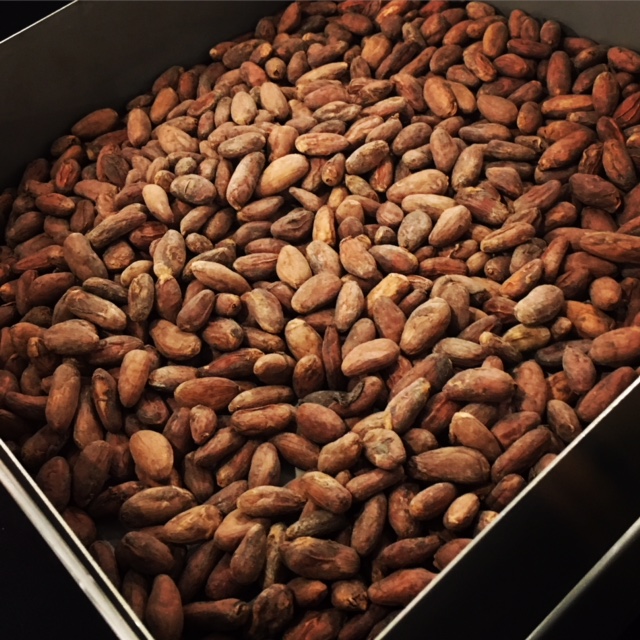
Chocolate as Currency
What is it about chocolate that captures the popular imagination? From Charlie’s Golden Ticket to happiness having him running a Technicolor chocolate factory, to young John Midas, who suddenly finds that everything his lips touch turn to chocolate, children’s books portray chocolate as an object of greed and obsession, as a relief from poverty, at times even a stand-in for money.
But is this idea really so childish? Throughout history, a lot of edibles have been used in place of cash.
Salt
A Roman soldier was said to be worth his salt – because he was paid an allowance to buy salt (this is where the word salary comes from). Sometimes this allowance would be deducted from his wages in advance and he would be “paid” by being given the salt. Elizabeth Nix explains for history.com, “Salt came to represent power; without it, armies couldn’t travel great distances and explorers couldn’t sail to new lands because their provisions would spoil.”
Salt is essential for life. The human body requires a regular sodium intake to function properly. So it makes sense for people to be obsessed with it.
Tea
But what about something like tea? In ancient China, loose-leaf tea was commonly ground and formed into bricks, which were sometimes molded in forms that imprinted elaborate designs. These bricks were traded as currency throughout China, Tibet, Mongolia, and Central Asia – and were preferred over metal coins by nomads in Mongolia and Siberia, because you could eat it in an emergency (as a concentrated infusion mixed with butter or cream and salt) and brew it into medicinal beverages if you got sick (you’d want to toast it first to sanitize it of mold and bugs).
This was NOT the kind of tea that was tossed into Boston Harbor – loose leaf tea was the major form exported to Europe by that time – but tea bricks were still being traded as currency in countries along China’s Northern and Western borders.
Today, tea bricks are mainly souvenir items, or practical ways to package teas such as pu’erh.
Cheese
Even today, though, there is a bank in Northern Italy that accepts cheese as loan collateral. In order to assist cheese-makers, Credito Emiliano accepts Parmigiano-Reggiano and maintains warehouses that can hold as much as 17,000 tons of the cheese, worth roughly $187.5 million. They’ll hold onto the cheese wheels – each marked with a serial number in case of theft – for up to 34 months – which is how long these cheeses take to age. They’ve been doing this since the 1950s, and it actually saves the farmer on processing costs, since the cheeses are in climate-controlled vaults the farmer doesn’t have to maintain.
Chocolate
And yes, chocolate itself was used as money.
At the time when they intersected the conquistadors, the Aztecs and Mayans both used cacao beans as currency – as well as a beverage reserved for the elite (if you weren’t a solider a noble, being given a chocolate beverage – especially in Aztec society — probably meant something bad was about to happen to you).
But the beans were ubiquitous currency – to the point where forgers would carve fake cacao beans out of avocado pits and coat them with wax to impart a realistic sheen. Alternately, real beans would be hollowed out and refilled with mud.
Cacao was in fact the most common form of exchange in these societies. And some reports insist that cacao cultivation was intentionally limited to keep the exchange rate high.
“A 1545 list of commodity prices in Tlaxcala gives an idea of the purchasing value of cacao:
1 good turkey hen=100 cacao beans
1 turkey egg=3 cacao beans
1 fully ripe avocado=1 cacao bean
1 large tomato=1 cacao bean”
— When Money Grew On Trees by Cornell University
It put everyone in an interesting position. You could drink your wealth – or trade it. But cacao beans are perishable, so you couldn’t exactly hoard it.
“One early observer of the Aztec society, Peter Martyr, noted regarding Aztec money: “Oh, blessed money which yieldeth sweete and profitable drinke for mankinde, and preserveth the possessors thereof free from the hellish pestilence of avarice because it cannot be long kept hid underground” (Einzig, 1966).” – The Encyclopedia of Money
The beans are also bulky. So you couldn’t exactly hide it – and it would be hard to steal in large quantities.
The use of cacao as currency didn’t exactly end with the Aztecs.
“Cocoa bean currency stretched into Latin America. In 1712 a royal decree in Brazil listed cocoa, cloves, sugar, and tobacco as commodities that legally circulated as money and troops were paid in these commodities.”
Obviously, there’s a lot to unpack here, looking at each of these cases, and what the history involved says about human nature. I’m playing with a lot of that in my space opera Free Chocolate. Yes, the book’s meant to be a comedy – obvious with any premise that starts . . . and so the aliens landed . . . and ends with . . . and all the galaxy wants is Earth’s chocolate. But when you think about it, is it really that farfetched?

